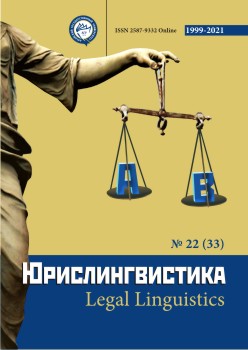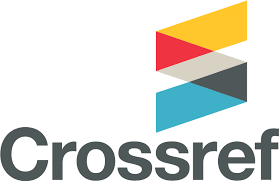Advertising in Video Games: Legal Qualifications
Abstract
The article is addressed to the legal analysis of advertising placed in video games. Topical issues of the concept of advertising are touched upon from the point of view of its compliance with the legal definition enshrined in the Federal Law "On Advertising". There has been analized the distribution of advertising in video games, such as ads embedded in game content, including "product placement". In Russian legislation, there is an analogue of this
category which is defined by the legislator as “references to a product, means of its individualization, about a manufacturer or seller of a product, which are organically integrated into works of science, literature or art”. The conclusion is made about the possibility of qualifying this technique as an advertisement in the absence of a sign of "organic integration". The examples of judicial and law enforcement practice of inorganic integration are considered. In such cases, the disseminated information is recognized as advertising, in respect of which the requirements of advertising legislation regarding restrictions on advertising of tobacco and alcohol, weapons and a number of other goods must be observed. There are special requirements for video games for minors in order to protect their rights. The author presents the position regarding the qualification of targeted advertising from the point of view of its compliance with such a sign of advertising as being addressed to an indefinite group of people. The conclusion is supported by the argument that personalization of an advertising message does not exclude its qualification as an advertisement. The problem of advertising distribution in computer games, including multiplayer games, carried out via the Internet, where obtaining the preliminary consent of the online game user to receive advertising is achieved by including this condition in the user agreement, is investigated. The conclusion is made about the need to improve legal regulation in the studied field.
Downloads
Metrics
References
Гришаев С.П. Реклама: правовое регулирование / Редакция «Российской газеты». 2015. Выпуск 10. С. 25-26.
Кирюшина И.В., Лебедев Н.Ю. Правовая квалификация адресной рекламы / Известия Алтайского государственного университета. – 2018. – №3 (101). – С. 135-139.
Козлова М.Ю. Требования к рекламе в сети Интернет. / Право в сфере Интернета: Сборник статей / под ред. М.А. Рожковой. М., 2018. С. 140-142.
Куликов А. Правовое регулирование использования product placement в России. 2016 // URL: https://cljournal.ru/vybor/158/?print#_ftn11.
О рекламе: федеральный закон от 13.03.2006 №38-ФЗ / Собрание законодательства РФ. – 2006. – № 12. – Ст. 1232.
Письмо Федеральной антимонопольной службы России от 05.04.2007 № АЦ/4624 «О понятии «неопределенный круг лиц» / Экономика и жизнь. – 2007. – № 19.
Письмо Федеральной антимонопольной службы России от 25 мая 2011 г. №АК/20129 «О признании рекламы неорганично интегрированной в теле-, радиопередачу» // URL: http://www.consultant.ru/document/cons_doc_LAW_133017/.
Постановление Пленума Высшего Арбитражного Суда РФ от 08.10.2012 №58 «О некоторых вопросах практики применения арбитражными судами Федерального закона «О рекламе» / Вестник Высшего Арбитражного Суда РФ. – 2012. – №12.
Право интеллектуальной собственности. Авторское право: Учебник. Т.2 / под ред. Л.А. Новоселовой. 2017 // URL: http://www.consultant.ru/edu/student/download_books/book/pravo_intellektualnoj_sobstvennosti_t_2_avtorskoe_pravo/.
ФАС в СМИ: ФАС оштрафовала на 100 000 руб. создателя фильма «Вий» за скрытую рекламу водки «Хортиция» / Официальный сайт ФАС России // URL: https://fas.gov.ru/publications/3962.
Copyright (c) 2021 Ирина Кирюшина

This work is licensed under a Creative Commons Attribution 4.0 International License.
The authors, which are published in this journal, agree to the following conditions:
1. Authors retain the copyright to the work and transfer to the journal the right of the first publication along with the work, at the same time licensing it under the terms of the Creative Commons Attribution License, which allows others to distribute this work with the obligatory indication of the authorship of this work and a link to the original publication in this journal .
2. The authors retain the right to enter into separate, additional contractual agreements for the non-exclusive distribution of the version of the work published by this journal (for example, to place it in the university depository or to publish it in a book), with reference to the original publication in this journal.
3. Authors are allowed to post their work on the Internet (for example, in a university repository or on their personal website) before and during the review process of this journal, as this may lead to a productive discussion, as well as more links to this published work (See The Effect of Open Access).











